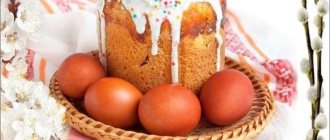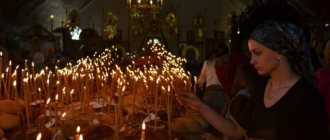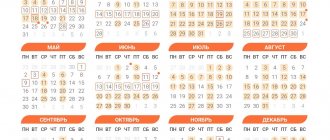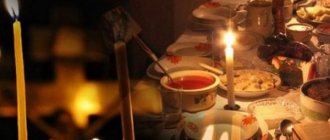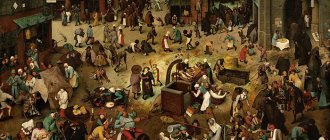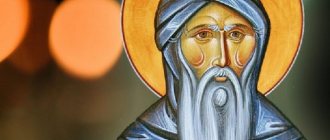The date of Easter celebration changes every year, but Orthodox Christians probably know what date they celebrate Maslenitsa, Easter, Palm and Forgiveness Sunday in 2022. After the Nativity of Christ and Christmastide, we begin to prepare for the onset of Lent. For four weeks, sermons will be heard in churches about the famous parables of Christ: the publican and the Pharisee, the prodigal son, and the Last Judgment. This reminds us that we are all on earth only guests, and our whole life is the path to the Kingdom of Heaven.
Lent is considered the most important season for the Russian Orthodox Church. This is the longest period for which believers limit themselves to food and lead a very special lifestyle.
The Holy Resurrection of Christ is celebrated in the spring - from year to year, the day of celebration is calculated according to a special church calendar.
Maslenitsa, Lent and Easter: what date in 2022?
In spring, many Orthodox and pagan holidays are celebrated - Easter, Maslenitsa, the beginning of Lent, Forgiveness Sunday, etc.
Maslenitsa is celebrated 56 days before Easter. In 2022, Maslenitsa will be held from February 28 to March 6.
Maslenitsa is specially celebrated a week before Lent in order to have time to have fun and prepare those dishes that will then be banned for more than a month.
Maslenitsa is a kind of boundary between winter and spring. On this day, a straw effigy of Maslenitsa is burned, calling for spring.
Maslenitsa is a pagan holiday, but it has been celebrated since ancient times. People of different classes and ages go out into the street, treat themselves to pancakes, say goodbye to winter and welcome spring.
Traditionally, Maslenitsa is celebrated for a whole week - from Monday to Sunday. Immediately after Maslenitsa, Lent begins, which lasts 7 weeks.
Historical roots of Easter Sunday
First, let's look at the etymology of the word Easter. It originates from the Hebrew language and sounds like “Pesach”. Translated as outcome, passing by in one version and in another as the verb “to suffer.” "Pesach" was celebrated as the date of the departure of the Jewish people from Egypt and the expectation of the Messiah.
This event took place in the 14th century BC. Later, its meaning changed a little: the exodus of the Jews, that is, liberation from slavery, became liberation from sin and death, and the expectation of the Messiah is the death and resurrection of Jesus. Initially, in the era of early Christianity, this holiday was celebrated weekly. And only by the 2nd century, it began to be celebrated every year. For a long time there was no consensus between different faiths regarding the date and traditions of the event.
Preparation for the celebration of Orthodox Easter
Lent in 2022: from what date to what date
Based on the dates of Maslenitsa and Easter, you can determine the start and end dates of Lent. The day after the end of Maslenitsa week, Lent begins, which lasts 40 days. And it ends with Easter.
Since Easter falls on Sunday 24 April in 2022, Lent will last from Monday 7 March to Saturday 23 April. Taking these dates into account, Maslenitsa week will begin on Monday, February 28, and end on Sunday, March 6.
Lent is the strictest fast observed by Orthodox Christians. It consists of Lent - 40 days - and Holy Week - the week before Easter itself.
The strict weeks of Lent are the first and last weeks:
- March 7-14, 2022 - the first week of Lent.
- April 16-23, 2022 - Holy (last) week of Lent.
The basic rules of Lent are abstinence from foods containing animal fats (meat and processed foods), dairy products, eggs, and alcohol.
On Mondays, Wednesdays and Fridays you cannot eat foods that have been thermally processed. Hot meals are allowed on Tuesdays and Thursdays. Fish is allowed to be eaten for only 2 days during Lent - on the feast of the Annunciation of the Blessed Virgin Mary and on Palm Sunday.
Immediately after Lent, Orthodox Christians celebrate Easter.
Kiriopaskha
Kyriopascha or “Lord's Easter” is formally the coincidence of Easter with the Annunciation, that is, Easter on April 7 (March 25, Old Style), but in spiritual essence it is Easter, coinciding with the historical date of the resurrection of Jesus Christ: March 25, 31 AD .
Kyriopascha is a rather rare event. In the 21st century there will be two kyriopaschas in 2075 and 2086.
Calculation of the date of Orthodox Easter, Holy Resurrection of Christ *
Servants of the Russian Orthodox Church use special tables, which are placed in a book called “Divine Service Charter” or “Typikon”. The last chapter of the Typikon includes a table of Easter dates for 532 years - that's 28 nineteen years. The fact is that every 19 years, the dates of full moons are repeated, of course, if you accurately record the time of the astronomical full moon, there is a time shift, and approximately every 500 years, it is necessary to correct the tables. The date of Orthodox Easter is not at all difficult to calculate manually: First, the date of the Easter Sunday coming after this date is found according to the calendar . For a given Year, the Julian date of the Easter full moon is determined by the formula:
Full moon date ( Year ) = March 21 + RESIDENT (19* RESIDENT ( Year , 19) + 15, 30),
where Year is the year of our era (preferably limited to the past or current century), REMAIN (divisible, divisor) is the remainder of the division of positive integers entered as arguments (the formula is written in the format of Russified Excel formulas).
* The Russian Orthodox Church adheres to the Alexandrian Paschal, which calculates the date starting from March 21 according to the Julian calendar (that is, the earliest date of Easter may be April 4 according to the modern Gregorian calendar). In addition, in the Alexandrian Easter, the calculated Easter full moon in the 20th and 21st centuries occurs 4 - 5 days later than the real astronomical full moon, due to the accumulated error of the calculation methodology approved in ancient times over two millennia. The day of Easter itself is determined by two simple rules: 1. Easter is always Sunday , the seventh day of the week got its name in honor of the Holy Resurrection of Christ; 2. Easter is celebrated on the first Sunday after the first full moon, which occurs no earlier than the vernal equinox (the date of the full moon obtained from the tables of the Metonic cycle is implied: the calculated date of the new moon + 14 , the first after March 21 according to the Julian calendar). 3. The dates of all moving holidays are counted from the date of Easter
Palm Sunday in 2022: what date?
Palm Sunday will be celebrated on April 17 in 2022.
Palm Sunday is celebrated a week before Easter, meaning the date may change every year. In 2022, this day falls on April 17th.
The holiday is dedicated to the solemn appearance of Jesus Christ in Jerusalem. On this day, it is customary to go to church and bless palm branches. They symbolize the palm branches with which the Jews greeted Jesus in Jerusalem. Palm trees do not grow in the central part of Russia, so it is customary to consecrate palm branches as the first plant that blooms in the spring.
Few people know, but there is a rule - the number of willow branches should correspond to the number of people in the family.
What date is Easter celebrated in 2022?
In 2022, Orthodox Christians celebrate Easter on Sunday, April 24.
On the night of Easter, festive services begin in all churches. The priests make a religious procession around churches and temples to the sound of bells, and the sacrament ends with the blessing of Easter cakes and Easter treats.
They prepare for the holiday in advance - they clean the house, paint eggs and bake Easter cakes.
Easter traditions
Most Easter traditions originate in worship.
Divine service
Since ancient times, in the Church at night, on the main holiday of the church year, divine services with Liturgy take place. In some countries (Serbia) it is performed at dawn - early in the morning.
Greetings
Starting from Easter night and throughout the next forty days, it is customary to “confess Christ” with the words “Christ is risen!” They respond to this greeting with “He is risen indeed!”
Holy Fire
The Easter or Holy Fire plays an important role in worship and symbolizes the “Light of God, enlightening all nations.” In churches of large cities they expect it from the Church of the Holy Sepulcher (Jerusalem Church of the Resurrection of Christ).
When the Holy Fire arrives, the priests carry it around the city’s churches, and Christians light their candles from it.
Catholics, before the start of the service, light a special Easter candle - Paschal. Fire from it is distributed to all Christians.
meal
On Holy Saturday, Easter cakes, Easter cottage cheese and Easter eggs prepared for the festive table are illuminated.
The Easter egg symbolizes the Holy Sepulcher. From the outside it looks dead, but inside there is new life.
The custom of giving eggs is associated with a legend according to which Mary Magdalene found a way to appear to Emperor Tiberius and give him a red-painted egg with the words “Christ is Risen!”
Another version of the presentation says that at first it was ordinary and the emperor doubted the news of the resurrection. He said, just as an egg cannot turn from white to red, so the dead do not rise again. The egg turned red before his eyes.
Despite the fact that eggs are painted in different colors, red is the traditional one, symbolizing the blood of the crucified Christ.
Procession
Before Easter, believers gather in a church, then at midnight a religious procession takes place around it or to the door of another with a large cross, icons and the singing of the stichera (prayer chants) of the holiday. When the procession approaches the doors of the temple, the service begins.
Easter bell
During Holy Week (the week preceding Easter), the bells are heard until Good Friday (Friday of Holy Week) inclusive. At the evening service, when they serve Matins on Holy Saturday, they also ring. After placing the Shroud in the temple, a peal is heard. Then the bells are silent until the Midnight Office (one of the services of the liturgical circle) of Holy Saturday (until the bell rings for the Easter service).
In other countries (France) there is also a tradition of keeping the bells silent from Good Friday until the celebration of the Resurrection of the Savior.
Why Easter is celebrated on different days: commentary from a priest
In Orthodoxy, Easter is called a moving holiday. This means that its date changes every year, because the first full moon falls at one time or another. By the way, moving (or sliding, movable) holidays also include such Orthodox dates as the Days of Remembrance of Saints, Councils of Saints and some others.
It’s interesting that people also have their own moving holidays - for example, try to name the exact date of Easter. And many professional days (architect, miner, veterinarian, etc.) are celebrated on the first/second, etc. Sunday of the month. So there are more than enough analogies from ordinary life.
Priests repeatedly point out that there is no confusion in this phenomenon. Yes, it’s clear why Easter is a moving holiday - it’s just always celebrated at different times.
And of course, it is better to see once than to hear a hundred times. The answer to the question discussed can be seen here.
Earliest Easter
For a very long time, churches in different countries of the world could not determine a single date for the Christian Church. This was explained by the fact that the Orthodox religion was layered on already rooted traditional holidays and beliefs. The importance and necessity of making a unified decision was discussed more than once, but it was never possible to come to a common conclusion. It was decided only in the fourth century by the king of Rome Constantine at the Council of Nicaea.
They also decided that Easter is established after the spring equinox, on the 1st Sunday, provided that this day does not coincide with Easter celebrated by the Jews. If these rules are followed, it can be calculated that the earliest Easter was April 4th or March 22nd according to the old style (recorded only 9 times), April 25th according to the pre-revolutionary calendar, or May 8th according to the new calendar. In our century, the earliest Easter dates back to 2010, the latest – 2013.
Calendar of Orthodox holidays
Krasnaya Gorka is the most favorable day for marriage
Red Hill (May 1, 2022) is a holiday of festivities. Young people are having fun, organizing games, noisy feasts. After the festivities, people go to Church for services.
It is not recommended to get married before Krasnaya Gorka, because The Church does not hold weddings during Great Lent and Easter Week.
Krasnaya Gorka is the most favorable day for marriage
Great Orthodox holidays
January 14—circumcision of the Lord. Memory of Basil the Great. Old New Year.
July 7 - Nativity of John the Baptist.
July 12 - Holy Supreme Apostles Peter and Paul.
September 11 - Beheading of John the Baptist.
October 14 - Intercession of the Blessed Virgin Mary.
September 1 - New Year - on this day, Christian believers pray to God for blessings for the new year that has begun.
July 18 and October 8 - Sergius of Radonezh - Russian church and statesman, canonized.
May 21 and October 9 - Apostle and Evangelist John the Theologian. According to legend, on this day, May 21, a thin layer of his ashes (or “manna”) began to appear on the grave of the Apostle, bringing healing.
May 22 and December 19 - St. Nicholas, Archbishop of Myra in Lycia, Wonderworker . In every Temple, in every Russian Church, in every home there is an icon of St. Nicholas the Wonderworker, which helps in troubles and heals.
January 8 – Cathedral of the Blessed Virgin Mary. In the old days, on this day, young girls, pregnant women and mothers with small children came to the midwives for a blessing.
January 20, March 9, June 7, July 7, September 11 and October 25 Cathedral of John the Baptist. The following holidays were established in his honor: October 6 - conception, July 7 - Christmas, September 11 - beheading, January 20 - Council of John the Baptist in connection with the feast of Epiphany, March 9 - the first and second discovery of his head, June 7 - third discovery his chapter, October 25 is the celebration of the transfer of his right hand from Malta to Gatchina (according to the new style).
February 9, February 12 and November 26 - John Chrysostom. In his honor, 3 holidays were established: February 9 - the celebration of the transfer of the relics of St. John Chrysostom. February 12 - Council of Ecumenical Teachers and Saints Basil the Great, Gregory the Theologian and John Chrysostom. November 26 - memory of St. John Chrysostom
12th of February. Cathedral of the Three Saints. The Church celebrates the memory of the holy Ecumenical teachers and saints Basil the Great, Gregory the Theologian and John Chrysostom.
June 7 Finding of the head of John the Baptist. This day is popularly called the Feast of St. John Kupala. Many superstitions are associated with it, and this day is also celebrated with pomp and joy. In churches on the Feast of St. John Kupala, after Matins, herbs and flowers are blessed. Collected on the eve of the holiday and consecrated, they are considered especially healing.
March 22 - Memory of the Holy Martyrs of Sebaste. In Russia, on the day of remembrance of the Sebastian Martyrs, it is customary to make dough and bake “larks” - buns in the shape of birds. Thus, the larks represent the Glory of the Lord raised by the martyrs, their humility and aspiration upward, to the Kingdom of Heaven, to the Sun of Truth - Christ.
May 24 - Cyril and Methodius. Believers pray to him for successfully passing exams when entering a university and other topics related to studies.
July 28 - Prince Vladimir. A new memorable date is being celebrated in Russia - the Day of the Baptism of Rus'.
July 21 and November 4 - Kazan Icon of the Mother of God. The Kazan Icon of the Mother of God is considered the patroness of the Russian land. Orthodox people prayed to her, asked for help and support in the most difficult times for Russia. Many people call this icon the intercessor of the Russian land.
How to calculate the day of Easter yourself?
This will require simple knowledge of mathematics and the main rule of calculation. It applies to representatives of both faiths - celebrations must fall on the 1st full moon Sunday in the spring. It comes immediately after the spring equinox. It is not difficult to find it on the calendar; it can be difficult to calculate the day the new moon appears, for this you will need knowledge of mathematics.
Easter
Let's start the calculation by finding the number, dividing the desired year by nineteen plus 1. Then multiply the result by eleven, and divide by thirty, select the remainder, this will be the base of the moon. To calculate the date of the appearance of the new moon, you need to subtract the base of the moon from thirty. And the final stage, we add fourteen to the date of the new moon, so we will find the date of the full moon.
And with this “not tricky” puzzle we calculate the date of the holiday. But it is worth remembering the following nuances. If the full moon you need falls on the spring equinox, the celebration is postponed for a week. If it falls on the Easter full moon, which occurs on Sunday, then Easter will be celebrated on the following Sunday. Well, for those who don’t have time for such tasks, you can simply look at the calendar for the desired year.


